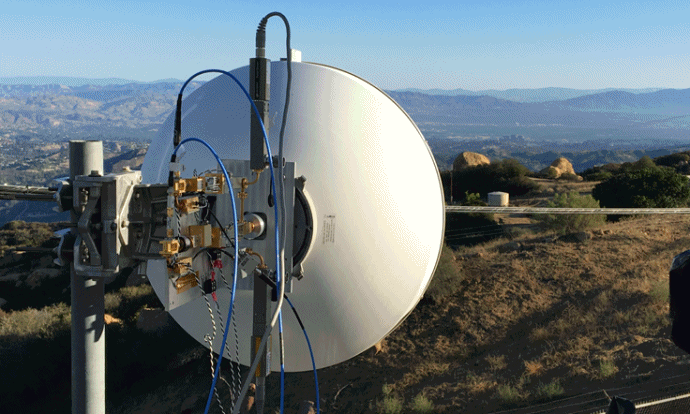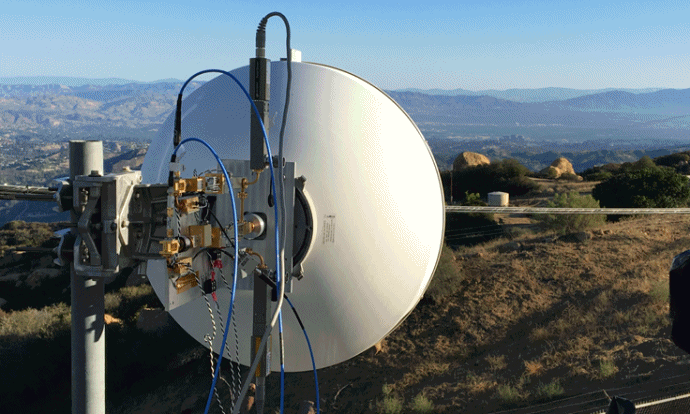A new record data rate has been claimed by researchers using the millimeter-wave (MMW) portion of the radio frequency spectrum - an astounding close to 20 Gbps over a distance of 13 kilometres.
The achievement was made by Facebook Connectivity Lab researchers with equipment consuming just 105 watts direct current (DC) power consumption at the transmitter and receiver.

The image above shows the transmitter; which uses custom-built MMW components attached to a commercial 2ft diameter parabolic antenna; installed in Southern California. The transmission used a bandwidth of 2 GHz, and according to the researchers, resulted in an overall spectral efficiency of 9.8 bits per second per Hertz.
So how fast is 20 Gbps?
It converts to 9,000 gigabytes (GB) per hour or 2.5 gigabytes per second. A standard definition movie is around 1GB to 2GB - so a single movie could in theory be fully downloaded in a little as less than half a second. But of course, in practice there'll be far more than just one user accessing this resource. However, even with multiple users, the performance is very impressive.
"To put this in perspective, our demonstrated capacity is enough data to stream almost 1,000 ultra-high-definition videos at the same time," says Abhishek Tiwari, an RF/MM-wave Product Engineer at Facebook Connectivity Labs.
Once fully developed, the technology will be used in conjunction with Aquila, Facebook's solar powered drone. Aquila will play a role in providing affordable internet access to remote region throughout the world. The UAV had its first successful test flight in July this year.
The Facebook team is now flight testing its first generation air-to-ground bidirectional MMW link on a Cessna aircraft flown at altitudes up to 20,000 feet.
But wait, there's more.
20 Gbps is pretty darned fast, but the next generation of Facebook's air-to-ground communication system will be capable of supporting 40 Gbps each way between an aircraft and a ground station. It's expected this next generation technology will be flight-tested early next year.
"We will continue to push the limits of wireless capacity over long ranges while staying within the tough size, weight and power constraints of Aquila communication payloads," states Mr. Tiwari.
You can read more about the team's achievement along with all the technobabble here.



